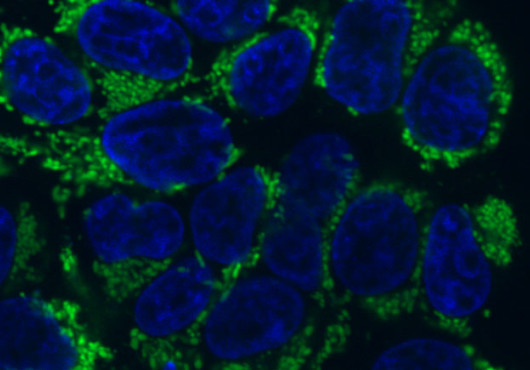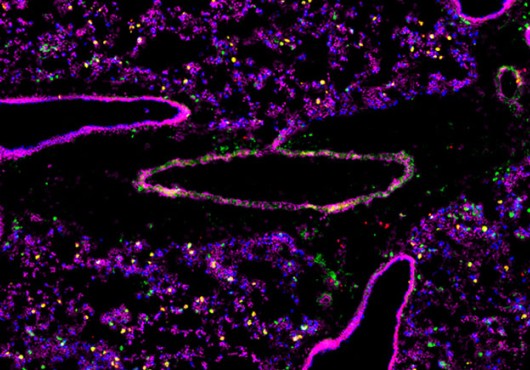
Immune checkpoint therapy has transformed the way certain cancers are treated, but could a similar approach hold promise for neurodegenerative diseases such as Alzheimer’s and Parkinson’s?
In a review article published in the October issue of Nature Neuroscience, Harvard Medical School investigators based at Massachusetts General Hospital have proposed that targeting immune checkpoints—molecules that regulate the activity of the immune system—in the brain could reduce the inflammatory aspects of some neurodegenerative conditions.
Specifically, they discuss targeting microglia, the immune cells of the brain, and how uncontrolled microglia activity may contribute to neuroinflammation and neurodegeneration.
“Microglia have three essential functions: a ‘sentinel’ function that surveys and senses changes within the brain, a ‘nurturer’ function that promotes neuronal well-being through actions such as removing dying cells and debris, and a ‘warrior’ function that defends the brain against infections and toxins,” explained senior author Joseph El-Khoury, HMS associate professor of medicine at Mass General.
“In healthy brains, immune checkpoints in microglia keep the warrior function in check. Disruption of those checkpoints initiates or propagates neurodegeneration,” he said.
While microglia have long been recognized as the innate immune cells of the brain, El-Khoury and colleagues delineated these three functions based on patterns of gene expression within the cells. After detailing how microglia carry out these functions, the authors reviewed how the processes can go awry in several neurodegenerative disorders.
In Alzheimer’s disease, microglia are known to accumulate around amyloid-beta plaques, and mutations in several microglial genes can increase the risk of developing the disease. An inability of microglia to keep up with persistent production of amyloid-beta leads to the release of inflammatory factors that further compromise the cells’ ‘nurturer’ functions, eventually transforming them into a disease-associated form that induces persistent, damaging neuroinflammation.
In Parkinson’s disease, activated microglia are known to be abundant in the substantia nigra, the brain structure damaged in the disease. Positron emission tomography scan studies have shown widespread inflammatory microglia early in the course of the disease, and evidence suggests that the same sort of double-edged sword situation seen in Alzheimer’s disease—in which initially protective microglia escape regulation, leading to persistent damaging neuroinflammation—also occurs in Parkinson’s.
And in amyotrophic lateral sclerosis, inflammatory microglia have been found in the brain near injured neurons of patients. In a mouse model carrying a mutant SOD1 gene—one of several genes that, when mutated, can cause inherited forms of ALS—microglia have been found to be protective at disease onset but neurotoxic at later stages.
The investigators also describe how initially protective microglia can escape regulation and become damaging in multiple sclerosis, Huntington’s disease and several other neurodegenerative conditions.
The team identifies three potential immune checkpoints in microglia—Trem2, which regulates all three functions; Cx3cr1, which regulates the sentinel and nurturer functions and the progranulin pathway, which also regulates sentinel and nurturer functions.
Evidence points to dysregulation of both Trem2 and progranulin in Alzheimer’s disease, ALS and other disorders; and Cx3cr1 is known to alter the course of disease in animal models of Alzheimer’s disease, Parkinson’s disease, ALS and other disorders.
While immune checkpoint therapies for cancer— the discovery of which recently received the Nobel Prize in Physiology or Medicine—are designed to inhibit checkpoints that prevent the immune system from attacking tumor cells, in neurodegenerative disease the goal would be to activate checkpoints that could reduce and potentially eliminate out-of-control neuroinflammation, returning microglia to their healthy neuroprotective state. El-Khoury and his colleagues are now working to improve understanding of how microglia contribute to neurodegeneration.
“Analyzing patterns of microglial gene transcription and regulation in several disease states, understanding how those patterns may be altered by aging and disease progression, and correlating those changes to microglial behavior is essential,” he said.
“Expanding studies from animal models to human patients remains a challenge that will require development of new, reliable cellular models based on patient samples and additional technologies for imaging and analysis,” El-Khoury added. “New techniques to incorporate microglia into three-dimensional organoids—miniature organs grown from living tissues—are a crucial next breakthrough that needs to be achieved.”
Additional authors include Suzanne Hickman, Saef Izzy, Pritha Sen and Liza Morsett. The article was prepared through support from National Institutes of Health grant RF1 AG051506.
Adapted from a Mass General news release.





